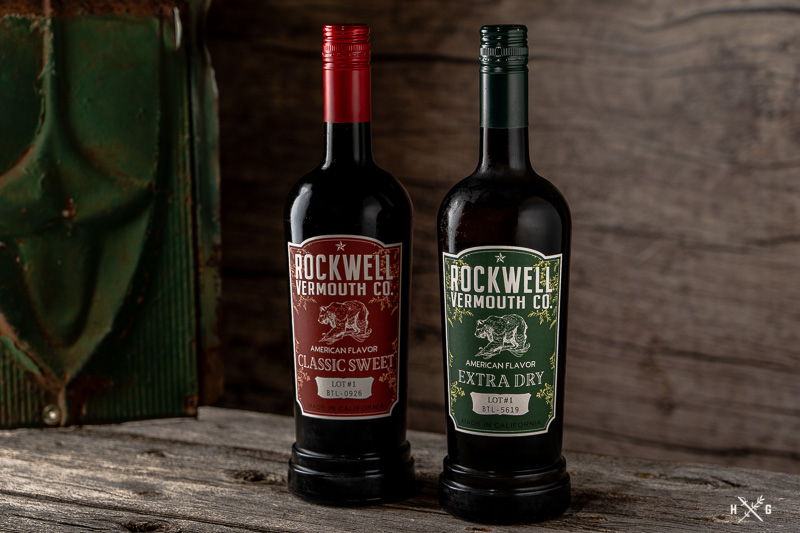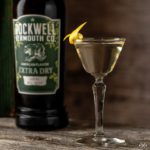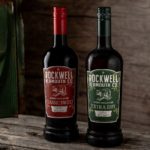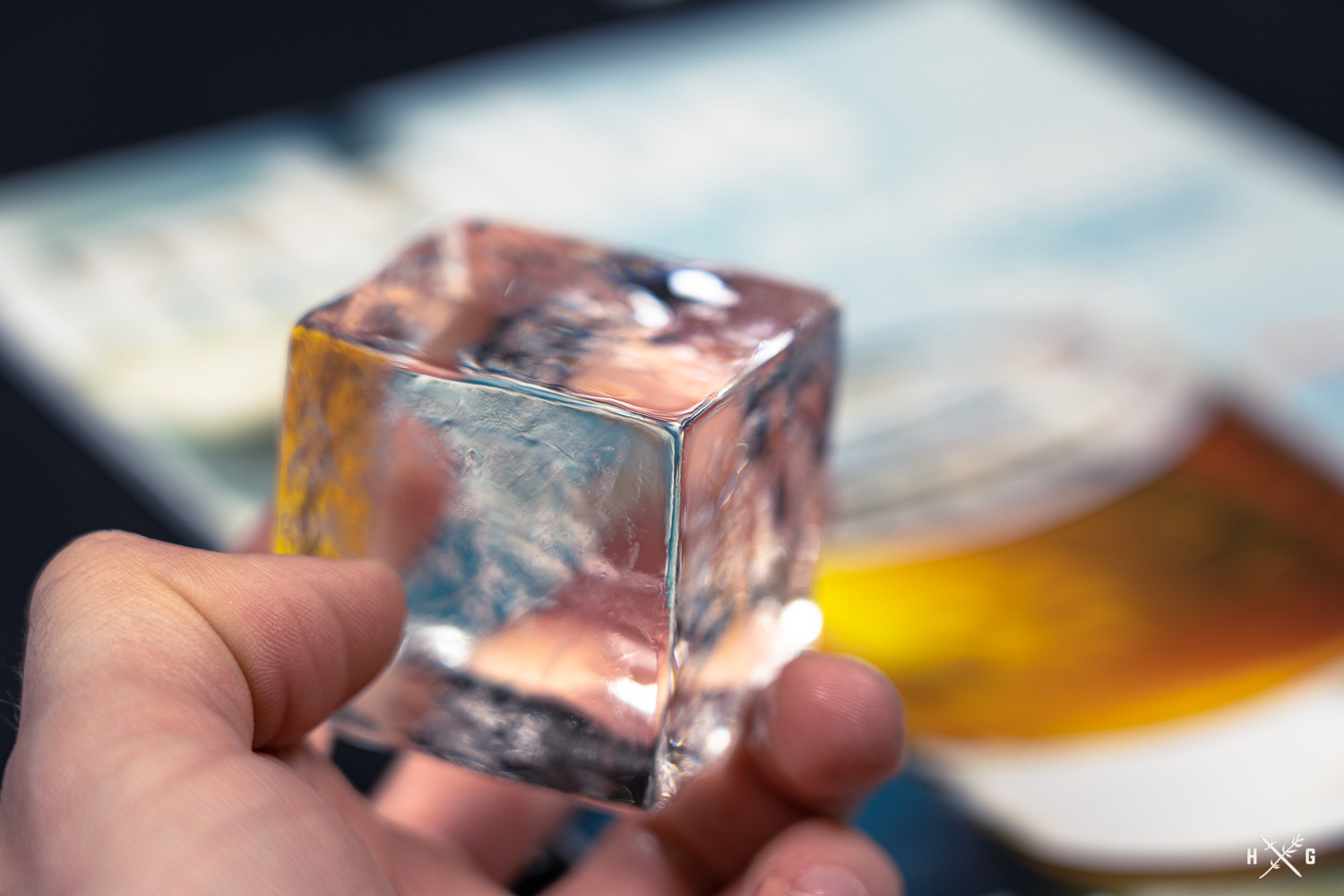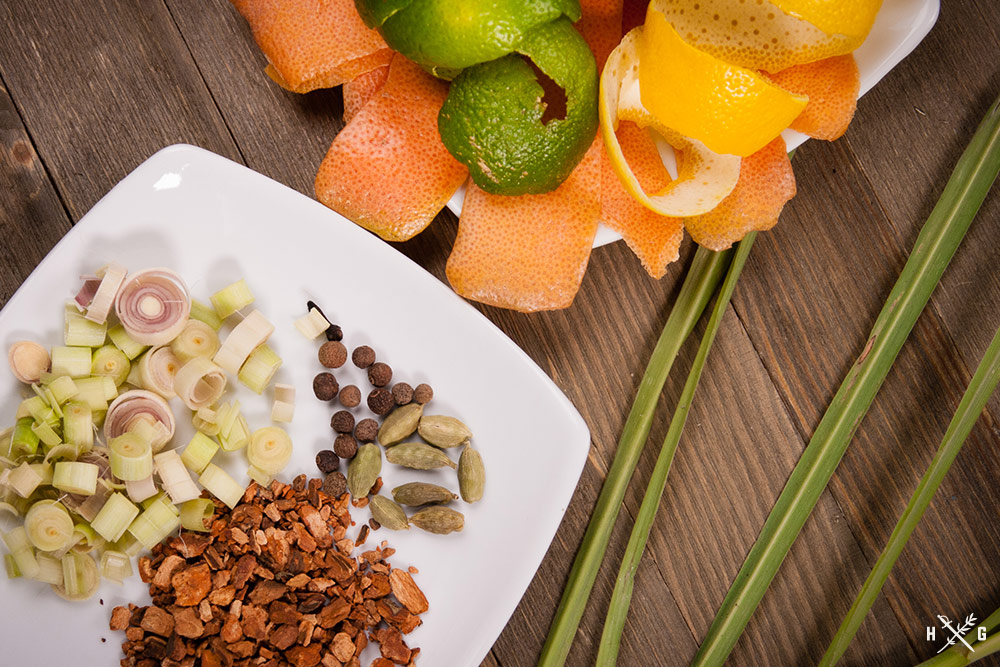Birk O’Halloran is an American winemaker known for launching Iconic Wines in 2011, and, most recently, California-based Rockwell Vermouth. O’Halloran bottled his first batch of vermouth this July, and I recently spent some time asking him about his backstory, the process of launching an American vermouth, and what’s next.
When asked how he became a winemaker and vermouth producer, O’Halloran simply describes it as “drinking his way up the supply chain for the last 15 years.” Perfect for a social media bio, but I am genuinely interested, so I ask for the specifics.
After studying hotel management at Cornell, O’Halloran realized his desire was more for travel than for hospitality. Every semester he’d change his focus. At one point, he even considered data analytics and modeling, but an interest in wine always lingered. “For an ADHD person, it’s perfect,” O’Halloran said. “It’s soil science, it’s biochemistry, it’s fluid dynamics. And, with this vermouth, it’s glass manufacturing, label templating… Every day I wake up and I have to read a paper to learn about a new subject.”
Anyone in the wine industry has to both have patience and love the process. The 15-year journey that led O’Halloran to launch Rockwell Vermouth started with a job as a wine director. From there, he began working in wholesale and importing, then became a domestic portfolio manager. “I started getting drunk with the right people,” O’Halloran joked. (Another social media bio zinger.) Working alongside well-known winemakers Steve Matthiasson and Dan Petroski gave him valuable insights and inspired him to launch his brand. With roughly $12,000 in cash and $10,000 in credit card debt, O’Halloran launched Iconic Wines in 2011. Unable to afford a graphic designer, O’Halloran taught himself design, a skill that has proven invaluable with the launch of Rockwell Vermouth.
As of 2020, he’s in his 11th harvest as a winemaker, and he has launched both a sweet and a dry vermouth–while in the middle of a global pandemic.
“It’s one of the hardest things I’ve ever done,” O’Halloran said. “There’s just no roadmap. You can Google ‘vermouth recipes’ and within a morning, you can find every published vermouth recipe, and most of them are… let’s just say they’re not created by professional vermouth makers.” While wine knowledge that would have previously taken 6 years to acquire is accessible in the palm of your hand, vermouth, with its closely guarded recipes, is an entirely different story. “I’ve even gone down the rabbit hole of searching YouTube for videos of tourists at places like Martini & Rossi to try to glean information from them,” O’Halloran said.
This relentless pursuit began when O’Halloran’s wife was pregnant with their first child. He didn’t want to open nice bottles of wine only to have them oxidize because he had no one to share them with, so he began drinking classic cocktails like the Manhattan, Martini, and Negroni, all of which require vermouth. That dabbling became a lot more focused once he made the connection between how vermouth is as much of an expression of terroir as wine. Centuries-old recipes of French and Italian vermouths were formulated more by the botanicals native to the region, as opposed to what someone decreed as the correct way to make vermouth. Various styles emerged, and categories were defined based on factors like the level of sweetness and region of production.
With vermouth so closely tied to the terroir, is it possible to make an American Vermouth, but still respect and adhere to the traditions of European vermouth making? Should that even be the goal?
European laws specify a few key requirements for an aromatized wine to qualify as vermouth.
- The product must be prepared from wine. (75% of the recipe)
- It must include a botanical from the Artemisia species (generally wormwood, aka, artemisia absinthium). The name “vermouth” is the French pronunciation of the German word for wormwood, wermut.
- Range from 14.5% to 22% alcohol by volume.
The EU laws do not apply to a US producer, but, stylistically, these regulations ensure that the final product fits within what someone would notice as vermouth. The legal definition in the US is very vague stating, “Vermouth is a type of aperitif wine compounded from grape wine, having the taste, aroma, and characteristics generally attributed to vermouth, and shall be so designated.” This definition is not only vague, but it doesn’t require the inclusion of wormwood. Many American vermouth producers have chosen to omit the bitter ingredient altogether.
O’Halloran was determined to create an American vermouth that was an expression of California terroir while adhering to those more rigid European standards. The first challenge: finding a native botanical in the artemisia genus.
A quick Google search informed O’Halloran that wormwood is only one of the 200-400 species included under the umbrella of artemisia. He then discovered that the abundant California Sagebrush’s scientific name was artemisia californica. Technically, it could be done.
Many American winemakers have attempted to apply their winemaking skills to the art of vermouth with limited success. Creating a recipe is one thing, but positioning a brand is another. O’Halloran was previously involved in launching two American vermouth brands, both with winemaking roots, but there was one particular conversation that he recalls provided him with insight.
The epiphany struck O’Halloran while at the Michelin star-rated ZZ’s Clam Bar in New York City. “I was discussing sipping vermouths with the bar manager,” O’Halloran said. “He sampled the product and said, ‘This product is amazing, but it’s not what I need. I need salt and pepper. This is a finished product, but I need an ingredient.’”
While much about American cocktail culture has advanced since its inception, one thing hasn’t. Americans still tend to see vermouth as a cocktail ingredient, not as a standalone product. Generally, when winemakers create vermouth, they do so from a winemaker’s perspective. O’Halloran understood that he was on a quest to create vermouth that played well with others. “That was a big thing for me,” O’Halloran said. “Not making a good wine, but making a good wine for vermouth production.” Wine needed to be the background component, enhanced by the botanicals, all while keeping in mind this would be a product intended to be mixed.
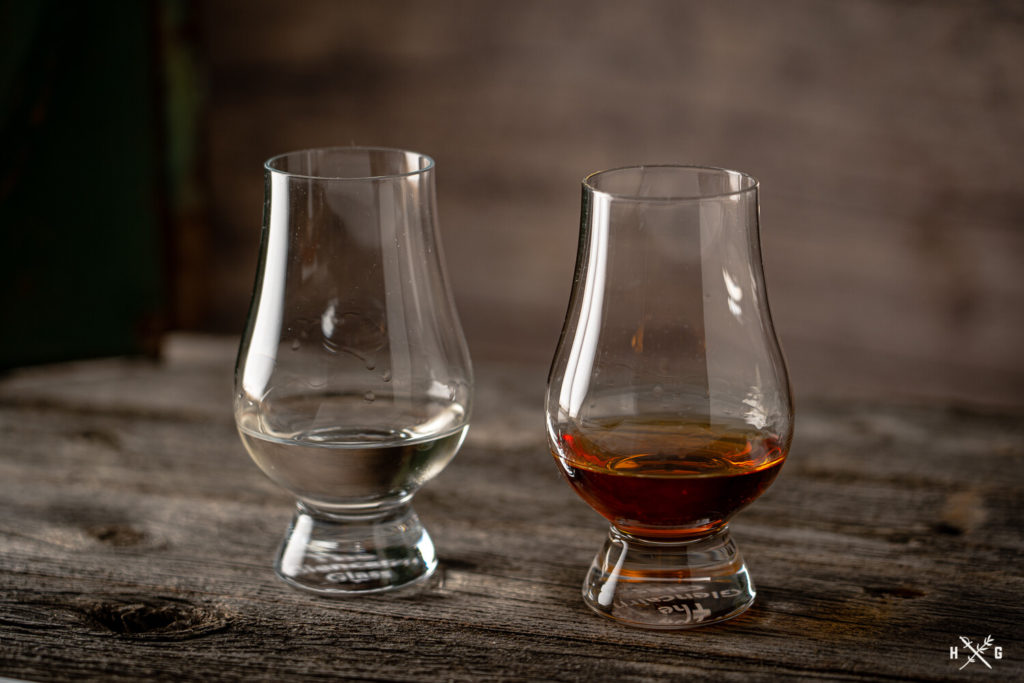
The interest in native plants and herbs began at a young age for O’Halloran. His father’s mentor was a Mohican chief, and, as a result, O’Halloran grew up reading books about herbs and plants used by Native Americans.
When it came time to develop the vermouth, O’Halloran first created what he calls his flavor library. “I foraged and collected at least 300 various ingredients. Some Old World ingredients to set the standard, and then a bunch of stuff that has likely never been used in vermouth. I liked many of those ingredients, but discovered that I couldn’t use them because they didn’t have TTB approval.”
The use of fresh ingredients leads to some variance when creating his extracts and tinctures. The goal is to establish a solera system to add consistency to the tinctures. All bottles of Rockwell Vermouth are numbered by lot and bottle numbers, but O’Halloran says the goal is to eventually remove those designations. For now, the numbering system is his way to acknowledge that there is room for tweaks. After all, he went through 100 iterations before bottling Lot #1.
Throughout the entire process, O’Halloran kept his mind on the end goal–to create vermouth that was well-crafted enough to stand on its own and most importantly could work well as a supporting ingredient in cocktails. “It wasn’t enough that it tasted right,” O’Halloran said. “I went out and bought every major market whiskey, gin, and vodka. After I would make a batch of vermouth, I would sit there and mix ten different martinis.”
When he’s trying to unwind, O’Halloran’s enjoys trying various martini recipes. (Recipes at end of the post.) His go-to is a classic 2:1 gin martini with Tanqueray and Rockwell Dry Vermouth, stirred and garnished with a lemon twist. Other times, he’s mixing up Julia Child’s 5:1 wet martini, often referred to as an Upside-Down Martini using Bixby Gin.
“Even to this day, part of our releasing the batch numbers with Rockwell is because I’d say I’m a cocktail enthusiast at best,” O’Halloran said. “I’m not a bartender. I feel like I’ve built a nail, and now I need to bring it to carpenters and ask them, ‘Is this a good nail? Can you build a house with this?’”
Understanding the value of perception, O’Halloran and his team put extensive thought into the bottle’s design. Everything from the label, to the bottle shape, color, and enclosure was meticulously designed.
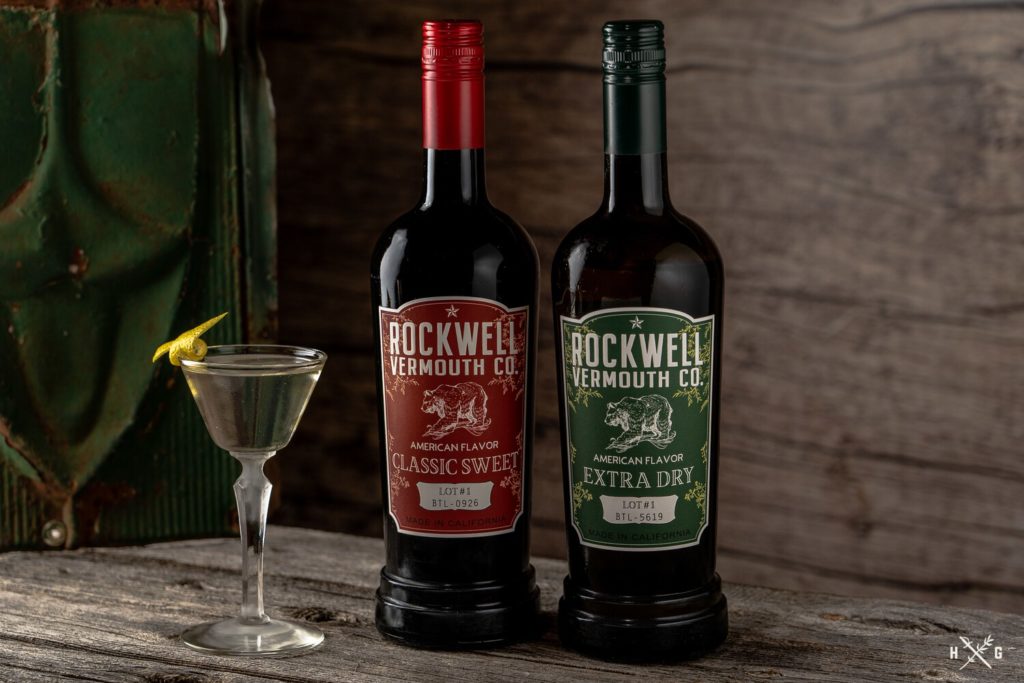
Rockwell adheres to the ubiquitous color scheme of red for sweet vermouth and green for dry vermouth. Except for the bear on the label, the designs are O’Halloran’s own. He teased the idea of using a corked enclosure, but a cork salesman talked him out of a sale when he explained that rounded wine closure tops would provide a better seal than cork, which would cause the vermouth to oxidize faster once opened.
With every foreseeable detail covered, perhaps the only thing more challenging than the initial recipe development has been launching the brand during a pandemic. The normal process would be to travel to bars across the country, dropping off samples, and getting direct feedback from bar managers and patrons. “There were conversations with bartenders early in my career that very much influenced what Rockwell became and I’m sure that those conversations are still waiting to happen,” O’Halloran said. The absence of this feedback loop makes it more challenging, but O’Halloran is still planning new releases of Rockwell, particularly an amber vermouth. He’s also looking into some barrel aging projects as well as a collaboration with a well-known brandy producer.
Whenever those new vermouths are released, I’ll be first in line to pick up a bottle. In the meantime, O’Halloran is looking for feedback from bartenders and industry experts on his sweet and dry. If you’d like to get in touch, submit the form at the end of this article and I’ll connect you.
Tasting Notes
To explore Rockwell’s Sweet and Dry Vermouths, I poured an informal flight alongside the trusty Dolin vermouths.
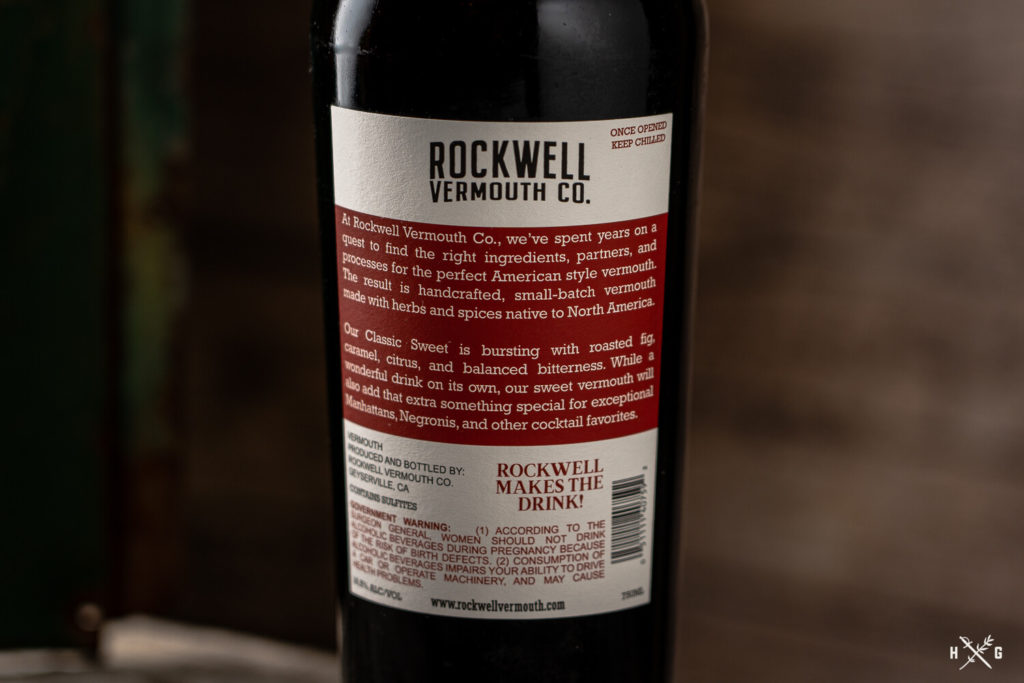
Rockwell Sweet Vermouth – On the nose, Rockwell has a certain fresh herbaceous quality with hints of vanilla, whereas Dolin comes across with a simple sweet raisin aroma. The herbaceous quality of Rockwell’s sweet vermouth reminds me of brisk mountain air. Not to be too esoteric with descriptors, but it’s that smell that you get in the spring when all the plants and trees start to grow after the winter snow melts. It’s fresh, woodsy, and damp. Overall, the difference between them is night and day. They both seem comparable on the level of sweetness, but Rockwell is much more complex. The gamut of sweetness, acidity, and the bitter finish is much more pronounced.
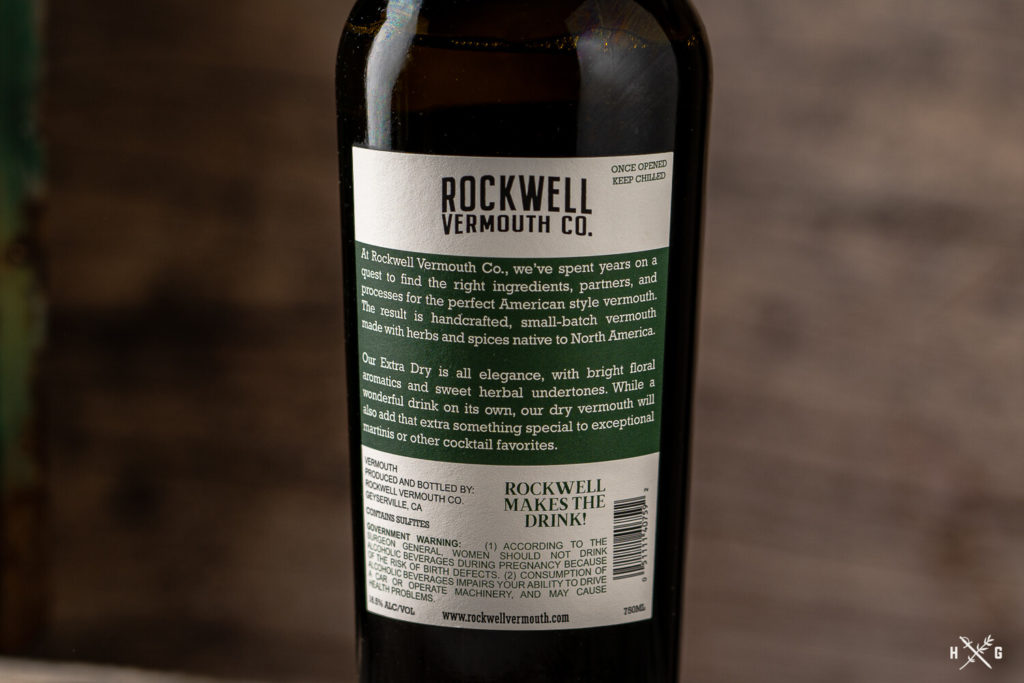
Rockwell Dry Vermouth – If you were to put Rockwell’s and Dolin’s sweet vermouths in front of me, I could distinguish them easily on aroma alone. The dry vermouth comparison is more challenging. They each have the expected citrus notes, and Dolin comes off slightly floral to me. What I like about Rockwell’s Dry is that it has a more pronounced dryness and bitterness to it.
Conclusion
Rockwell knocks it out of the park with their two entries into the American vermouth market. To create an American vermouth that uses all native botanicals while still adhering to the European standards is a feat. Competitively priced, these are must have bottles for the home enthusiast or bar program, especially Rockwell’s sweet vermouth.
Recipes
Classic Rockwell Martini
Ingredients
- 2 oz. Tanqueray gin
- 1 oz. Rockwell Dry Vermouth
Instructions
- Combine ingredients in a mixing glass with ice and stir until chilled.
- Strain into a chilled coupe or martini glass and garnish with an expressed lemon twist.
Julia Child’s Martini (Upside-Down Martini)
Ingredients
- 2½ oz. dry vermouth
- ½ oz. gin
Instructions
- Combine ingredients in a mixing glass with ice and stir until chilled.
- Strain into a rocks glass filled with ice and garnish with an expressed lemon twist. (Alternatively, this could be served the traditional method, in a chilled coupe or martini glass.)
Additional Resources:
- Rockwell Vermouth – Official Site
- Rockwell Vermouth – Facebook
- Rockwell Vermouth – Instagram
- Vermouth – Wikipedia
- Explanation of Vermouth Styles – Distiller
- Vermouth 101
- American Vermouth: Anything Goes – The New York Times
- History of Vermouth and Legal Regulations – Alcademics
- Standards of Identity for Wines (US) – Cornell Law School
- Official European Law on Vermouth
- Amor y Amargo’s Amber Vermouth Recipe
Provide Feedback on Rockwell Vermouth
I created The Humble Garnish because I’m passionate about cocktails. Occasionally, I am provided with products for review or other perks. Many product links on this site are affiliate links that give me a very small kickback, and costs the buyer nothing extra. For example, as an Amazon Associate, I earn from qualifying purchases after a link leading to Amazon is clicked. Other links may earn me affiliate commissions as well. This helps offset the cost of creating content for the site – things like camera gear, software, alcohol, glassware. I have at times accepted and at other times declined free products. I promote what I love and use, and rarely will write about a product that I don’t appreciate or own. If I don’t like a product or service, I often simply choose not to write about it.
– Andrew

